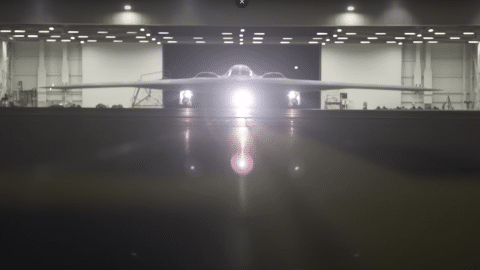
YouTube / Sandboxx
But it’s easy to see why people might think that, especially since the B-21 Raider is developed by the same company as the B-2 Spirit – Northrop Grumman, while also using the same radar-evading flying wing design.

However, their similarities end there.
Back when Northrop received the contract to build the B-2, MS-DOS had just been unveiled two months prior. In comparison, the B-21 has been developed entirely within the digital age, meaning that the Raider’s current systems are far more advanced than the Spirit.

This is also why the Raider’s secondary mission role includes the intelligence/surveillance and reconnaissance platform. In addition, the Raider is also meant to be flown with or without a crew on board, a huge plus in crew safety.
The American B-2 fleet must be stored in controlled hangars to protect their radar-absorbent materials from damage. Fortunately, today’s RAMs are rated to absorb up to 70% to 80% of inbound electromagnetic energy while also being much stronger, possibly allowing the B-21 to be stored outdoors.

It also means that it could dramatically reduce the cost of maintaining the RAM, which accounts for a considerable portion of the 130 thousand dollars per hour the B-2 costs to operate. So not only will the B-21 be stealthier than its predecessor, but it’ll also be much cheaper and easier to maintain.